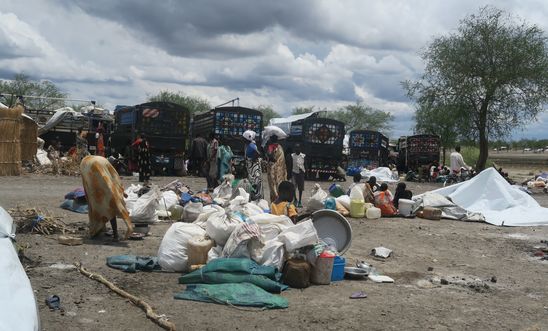
Press releases
South Sudan: 'Shocking' killing and mass displacement of Shilluk people by government forces - new evidence

Amnesty International can reveal the “shocking” horrors faced by tens of thousands of civilians in South Sudan’s Upper Nile region as they were forcibly displaced by government forces between January and May this year, in new findings published today.
Amnesty researchers interviewed victims and eyewitnesses who described how government troops and allied militias burnt, shelled and systematically looted civilian houses. Witnesses reported how a bombing from an Antonov plane destroyed civilian homes, and revealed how some elderly or vulnerable people who were unable to flee the violence burnt to death in their homes.
The organisations also documented how government troops killed several civilians over the course of the offensive. Some of the killings were clearly deliberate, as the victims were shot while held captive or shot in the back while they attempted to flee.
Civilians from the Shilluk minority told Amnesty how everything from stored food supplies to furniture and even the front doors of houses were stolen during the purge. One village chief described the destruction as though the area had been “swept by a flood”.
Joanne Mariner, Senior Crisis Response Adviser at Amnesty International, said:
“The mass displacement of the Shilluk ethnic minority, almost in its entirety, is truly shocking.
“Whole areas of the Shilluk heartland have been ravaged, with civilians’ homes burnt and their belongings and food stores looted. This leaves them with little prospect of returning home, given the region’s growing humanitarian crisis and their fears of renewed violence.”
The January-May 2017 government offensive in Upper Nile, aided by ethnic Dinka militias, retook territory that had in recent years been under the control of an opposition armed group made up of Shilluk Agwelek fighters under the command of Johnson Olony. It displaced tens of thousands of Shilluk civilians, including nearly the entire populations of numerous towns and villages on the west bank of the White Nile.
Amnesty has gathered satellite imagery showing the destruction of homes and other civilian objects in the central areas of Wau Shilluk – including a traditional temple or Radd. Most people in the region live in thatch-roofed huts called tukuls, which are highly flammable.
Some of the Shilluk have returned to their homes since the offensive, but the large majority remain displaced. Tens of thousands have fled north to become refugees in Sudan, and approximately 10,000 others are surviving in squalid conditions in an ad hoc camp in Aburoc village that has been wracked by dire shortages and cases of cholera.
Located in a pocket controlled by the Agwelek opposition forces, who are aligned with the Sudan People’s Liberation Movement-in Opposition (SPLA-IO), Aburoc is patrolled by a small contingent of UN peacekeeping troops sent there to facilitate the delivery of humanitarian aid. The camp is ill-suited to be a long-term refuge for large numbers of displaced persons as it lacks sufficient water for their basic needs
Donatella Rovera, Senior Crisis Response Adviser at Amnesty International, said:
“Bereft of food and belongings, Shilluk civilians will need humanitarian aid to return home. But most of all, UN peacekeepers must be prepared and adequately resourced to ensure that their security will be protected.”
In late May and early June, Amnesty International researchers interviewed 79 victims and eyewitnesses to abuses at an ad hoc displaced persons camp in Aburoc, and in the UN Protection of Civilians (PoC) site in Malakal, both in the Upper Nile region. They also spoke to numerous humanitarian staff, UN officials, and opposition, political and civil society figures in Aburoc, Malakal and Juba.